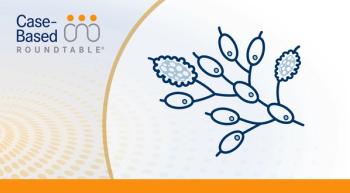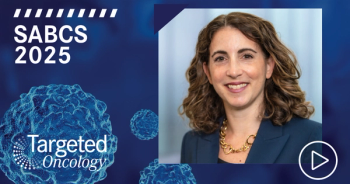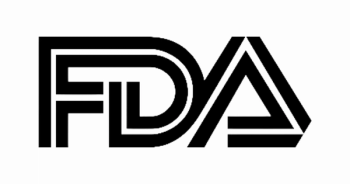
Obecabtagene Autoleucel Improves Survival in B-Cell Acute Leukemia
Obecabtagene autoleucel improved survival and response durability in B-cell acute lymphoblastic leukemia patients with minimal residual disease–negative remission.
Data from the phase 1/2 FELIX study (NCT04404660) showed that treatment with obecabtagene autoleucel (obe-cel; Aucatzyl) led to more durable responses and improved event-free and overall survival (OS) in adults with relapsed or refractory B-cell acute lymphoblastic leukemia (B-ALL) who achieved minimal residual disease (MRD)–negative remission by next-generation sequencing compared with those with minimal residual disease–positive remission.
The findings, which were presented at the 2025 Transplantation and Cellular Therapy Meetings, showed that in all evaluable patients (n = 68), 83.8% of patients achieved MRD-negative remission—defined as MRD levels of less than 10–6 leukemic cells—as their best MRD response by month 3 with no detectable leukemic cells at a threshold of 10–6, and 16.2% of patients had MRD-positive disease—defined as MRD levels detected above 10–6. Of note, the median time to best MRD response was 1 month (range, 1-3).
“Most responders to obe-cel achieved MRD-negative remission at the 10–6 level, measured by clonoSEQ NGS assay. The largest EFS and OS benefit was seen in patients with lower tumor burden at lymphodepletion,” study presenter Aaron Logan, MD, and co-authors wrote in a poster presented at the meeting.
Logan is a professor of Clinical Medicine at the University of California San Francisco School of Medicine.
Obe-Cel Background and FELIX Design
Obe-cel is an autologous 41BB-ζ CD19-directed CAR T-cell therapy with a fast off-rate target antigen binding domain that is designed to improve persistence and reduce toxicity.2 The FDA approved the respective CAR T-cell therapy in November 2024 for the treatment of patients with relapsed/refractory B-ALL.3
The FELIX study enrolled adult patients with relapsed/refractory B-ALL and evaluated the efficacy and safety of obe-cel with a data cutoff of February 7, 2024.1 Eligibility criteria included patients 18 years of age or older; relapsed or refractory B-ALL; morphologic disease, MRD-positive disease, or isolated extramedullary disease; intolerance to TKIs in patients with Philadelphia chromosome (Ph)–positive ALL; documented CD19 positivity within 1 month of screening; and an ECOG performance status of 0 or 1.1,4
Obe-cel was administered with a tumor burden–guided dosing strategy on days 1 and 10 to a total target dose of 410 x 106 CAR T cells.1 Bone marrow samples were collected at screening at a maximum of 1 week before lymphodepletion and 28 days after obe-cel infusion at months 3, 6, and 12, then every 6 months until the end of the study for central MRD evaluation via clonoSEQ.
The primary end point in the phase 1b portion of the trial was frequency and severity of adverse effects (AEs) and serious AEs after obe-cel; the primary end point in the phase 2 portion was overall response rate as assessed by immune-related response criteria in cohort IIA.4 Secondary end points in the phase 2 portion included the proportion of patients achieving MRD-negative complete remission (CR) by NGS; CR rate; duration of response; progression-free survival; OS; frequency and severity of AEs and serious AEs; duration of severe hypogammaglobulinemia; and detection of CAR T cells measured by polymerase chain reaction following obe-cel infusion.
In total, 127 patients were treated with obe-cel.1 Successful baseline NGS calibration occurred in 75.6% of patients, and 76.0% of patients achieved CR or CR with incomplete hematologic recovery. Additionally, 93.2% of patients had at least 1 post-infusion bone marrow sample for NGS MRD assay.
Patient Baseline Characteristics
Among evaluable patients in the MRD-negative remission group (n = 57) the median age was 51 years (range, 20-79), most were male (n = 35), 24.6% identified as Hispanic/Latinx, 33.3% had Ph–positive ALL, 49.1% had received prior allogeneic stem cell transplant (SCT), 12.3% had extramedullary disease (EMD) at lymphodepletion, and the median bone marrow blast percentage at lymphodepletion was 30.0% (range, 0%-99%).
Among patients in the MRD-positive remission group (n = 1) the median age was 51 years (range, 24-73), most were female (n = 8), 36.4% identified as Hispanic/Latinx, 18.2% had Ph–positive ALL, 9.1% had received prior allogeneic SCT, 27.3% had EMD at lymphodepletion, and the median bone marrow blast percentage at lymphodepletion was 58.0% (range, 1%-96%).
“A higher proportion of patients with MRD-negative remission had Ph–positive disease and prior allogeneic SCT, than patient with MRD-positive remission,” the authors wrote. “Patients with MRD-positive remission had numerically higher median bone marrow remission [rates].”
Additional Efficacy Data
Regarding survival outcomes by MRD status, the median EFS was 17.9 months (95% CI, 12.3-not evaluable [NE]) vs 4.5 months (95% CI, 1.7-NE) among patients achieving MRD-negative remission vs MRD-positive remission, respectively; EFS events occurred in 38.6% vs 45.5% of patients in the respective MRD remission groups. At the current follow-up, 70.2% of patients who achieved MRD-negative remission were alive. The median OS was NE for patients with MRD-negative remission vs 8.9 months (95% CI, 1.7-NE) for those with MRD-positive remission; OS events occurred in 29.8% vs 72.7% of patients in the respective groups.
MRD-negative remission was achieved across all tumor burden groups, although the proportion of patients achieving MRD-negative remission increased as tumor burden at lymphodepletion increased. Among patients with bone marrow blast counts lower than 5% at lymphodepletion, 90.0% had MRD-negative remission, and 10.0% had MRD-positive remission. Among patients with bone marrow blast counts between 5% and 75%, these rates were 86.7% and 13.3%, respectively. Among patients with bone marrow blast counts higher than 75%, these rates were 72.2% and 27.8%, respectively.
Patients with bone marrow blast counts higher than 75% at lymphodepletion had a shorter EFS compared with patients with bone marrow blast counts lower than 75%. The median EFS in patients with bone marrow blast counts lower than 5%, between 5% and 75%, and higher than 75%, respectively, were NE, 17.9 months (95% CI, 9.1-NE), and 11.9 months (95% CI, 6.0-NE); EFS events occurred in 22.2%, 34.6%, and 69.2% of patients, respectively.
In these respective populations, the median OS was 17.1 months (95% CI, 12.9-NE), NE, and NE; OS events occurred in 11.1%, 30.8%, and 53.8% of patients, respectively.
Disclosures:Logan reported receiving research funding from Actinium, Amgen, Astellas Pharma, Autolus Therapeutics PLC, Gilead Sciences, Kadmon, Kite, Pfizer, Pharmacyclics, Sanofi, Takeda, and Talaris.
Reference
Jabbour E, Park JH, Shaughnessy P, et al. Deep molecular remission predicts better clinical outcomes in adults with relapsed/refractory B-cell acute lymphoblastic leukemia (R/R B-ALL) treated with obecabtagene autoleucel (obe-cel). Presented at: 2025 Transplantation and Cellular Therapy Meetings; February 12-15, 2025; Honolulu, Hawaii. Poster 292.
Roddie C, Sandhu KS, Tholouli E, et al. Obecabtagene autoleucel in adults with B-cell acute lymphoblastic leukemia. N Engl J Med. 2024;391(23):2219-2230. doi:10.1056/NEJMoa2406526
FDA approves obecabtagene autoleucel for adults with relapsed or refractory B-cell precursor acute lymphoblastic leukemia. FDA. November 8, 2024. Accessed February 14, 2025. https://www.fda.gov/drugs/resources-information-approved-drugs/fda-approves-obecabtagene-autoleucel-adults-relapsed-or-refractory-b-cell-precursor-acute
A study of CD19 targeted CAR T cell therapy in adult patients with relapsed or refractory B cell acute lymphoblastic leukaemia (ALL). ClinicalTrials.gov. Updated September 3, 2024. Accessed February 14, 2025. https://clinicaltrials.gov/study/NCT04404660








































